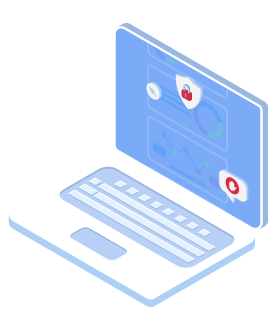Click Fraud Background
Ever since Google has introduced its revolutionary digital advertising platform – Google Adwords, it quickly became the main marketing channel for businesses worldwide. Google Ads determine an Ad’s rank in its search results page, based on a Pay per Click auction model. In other words, this usually means a higher bid (per click) in the “search auction” will allow a higher position in Google’s search results in the paid ads section, which is placed well above local, organic & other search results. Since many businesses rely on their digital presence to generate revenue, fierce competition in certain industries began.
Every business wishing to advertise on the Google Ads platform is required to supply a credit card, set a daily budget, and a “maximum bid” it is willing to pay for every click. The higher the budget and the bid, the higher the campaign will appear on the search result page, the more results & traffic it’ll send through to your website. So far so good. But what happens if you’re paying for fake users? Since eliminating a competitor’s daily budget will cause the system to show his ads, the incentive to perform fake, fraudulent clicks is quite high. It even gets higher as the cost-per-click (CPC) rises in the competitive verticals.
At first, click fraud techniques were quite simple. Perform a Google search, find your competitor’s ad, click it and watch his ads go down. Google responded by creating a special “Invalid Click” filter, designed to detect and filter out the fraudulent click activity. Fraudsters have quickly followed up with simple methods to bypass Google’s filters: changing an IP address, using an Incognito browser, or a fake user agent. As time went by, automated, more sophisticated tools started appearing. Here at Clixtell, we detect an extremely concerning rise in the amount of PPC click fraud generated by automated click fraud software.
What is a Click Fraud Software?
Click fraud sfotware, A.K.A “Click Bot” or “Traffic Bot”, is designed to perform malicious, automated, repeated Google Queries. This is achieved by using pre-determined keywords, and then search for a specific paid ad by its domain name, and click it. Modern 2021 click fraud software is often designed to automatically change IPs by using a Proxy server or a VPN network, locations, user agents, etc. after every search query. Therefore, making it extremely hard for Google’s automated filters to detect the traffic as fraudulent, and credit the client accordingly.
Usually, such software will also reset the browser’s cache or use a non-caching browser altogether. Mostly, these bots don’t run Javascript and therefore sometimes you can’t even see them on your Google analytics, although you’ll pay for all of them in Google Ads. Some bots are also capable of spending some time on the target website, run different codes, and even fake conversion actions. We’ve even seen bots capable of solving Google’s Captcha(!!). This behavior is mainly to disrupt fraud detection techniques and make it hard for the advertiser to identify and block malicious users.

The result for the advertising business could be devastating. Without proper click fraud protection, entire marketing budgets could go down the drain in a matter of minutes. A click fraud software doesn’t get tired or feel guilty. It could search and click your ads thousands of times in a matter of minutes while causing unparalleled damage to your business: on one hand, you’ll pay for the fake user clicks to Google, even if they’ve never converted and became your clients. On the other hand, all of the real business that your marketing campaign should have generated will simply click on to the next website. That’s right, your’ competitor’s website.
How to deal with Click Fraud Software?
Here at Clixtell, we’ve found that when dealing with automated click fraud software, the best protection tactic is to immediately block suspicious and fraudulent users by utilizing Google’s IP exclusion list. When a user is added to the IP exclusion list(s) within a Google campaign, Google will stop showing paid ads to that person/user/bot. If your competitor’s bots can’t see your ad – they can’t click it!
Adding the IP to the exclusion list has to be done very quickly to successfully prevent the attack in time. That’s why usually, manual blocks are simply ineffective against click fraud software. Usually, by the time you can do it manually, the damage is already done – you’ll have to pay for the clicks and hope your competitor won’t do it again tomorrow… Most click fraud protection software is also ineffective due to the fact they block IPs within Google only hours/days later, well after the damage is done.
Also, to successfully protect your campaign budget, the blocks must include all threatening IP ranges that may perform click fraud and not only the ones that already have. This is extremely helpful due to the fact VPN networks and Proxy service providers usually assign IPs from the same range to different locations/servers in use. This means many bot attacks may utilize hundreds of different IPs when in reality, they all belong to just a few IP ranges. Identifying and blocking these ranges in time is key to effective, solid click fraud protection.
World’s Best Click Fraud Protection
Clixtell is the world’s best Click Fraud Protection software due to many reasons. One of the main ones is the successful protection record Clixtell has in dealing with the newest, most advanced Click Fraud software in the most competitive industries. Clixtell analyzes each click by over 100+ data points to determine if the user is real or not. Bots, scripts, fake users, VPNs, and proxies are all immediately detected and blocked within Google Ads within seconds before any real damage is done. Activate Clixtell today to make sure you’re well protected against any click fraud software activity.


